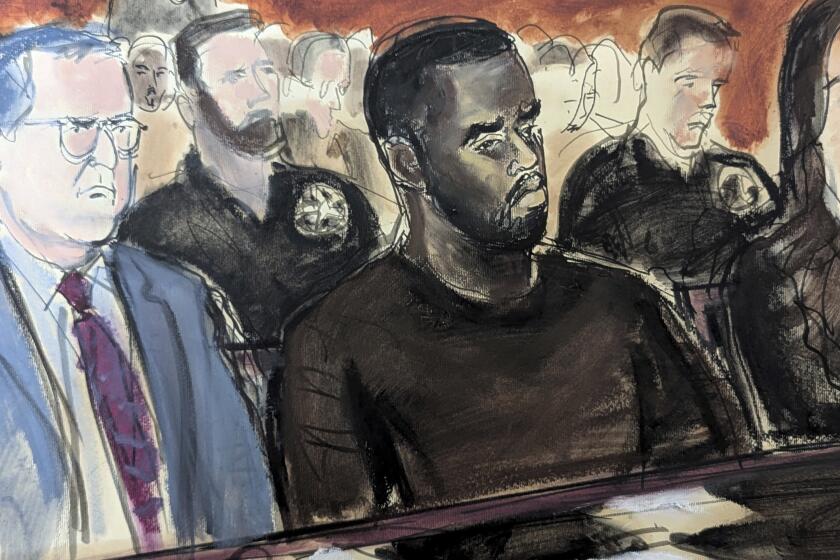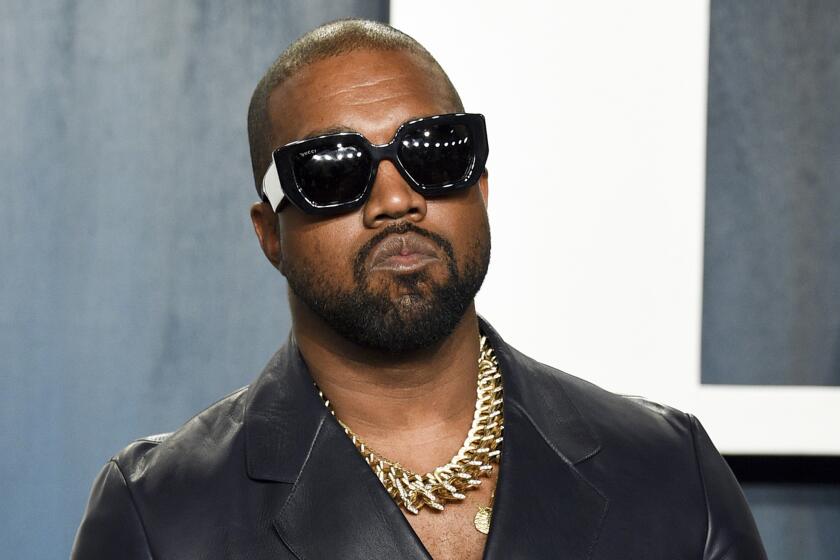Cutting Right to the Core of the Big Apple’s Jazz Scene
- Share via
NEW YORK — Jazz vocalist Jon Hendricks once described New York as “a place so nice they had to name it twice.” The “nice” may not register well with those who are paying $1,500 a month for 350-square-foot apartments, but--for jazz musicians--the city always has been the Big Apple, the destination of choice, the place to test one’s wares against the best.
This week, a quick-hit tour of a few of Manhattan’s jazz boi^tes, both better-known and lesser-known, affirmed the Apple’s continuing jazz vitality.
Take Tuesday, for example. If it’s Tuesday, it must be another opening night at the Village Vanguard. The start of another jazz week in a string of jazz weeks that reach back more than 65 years at one of the music industry’s most venerated performance spaces.
Pianist Kenny Drew Jr., whose father was a frequent performer at the Vanguard, arrives late, yet another victim of a delayed airline flight. Rushing on stage with his trio--Larry Gray, bass; Tony Jefferson, drums--he immediately kicks off a finger-stretching run through a Steve Swallow piece, “Fallen Grace.”
The moderate-sized audience reacts knowledgeably, avoiding what appears to be a West Coast practice of applauding after every solo, regardless of its quality.
The triangular-shaped room, actually a classic cellar jazz club--its layout determined by its presence in a building at the intersection of several typically ungridlike Greenwich Village streets--has remarkably good acoustics. Drew, a classically trained pianist with a distinctly rhapsodic style, makes the most of the good sound, delivering a series of solos emphasizing touch and tone. Not an inherently swinging improviser, he is at his best in pieces such as the Ellington-Strayhorn “Star-Crossed Lovers” rather than more lively numbers such as Thelonious Monk’s “In Walked Bud.”
He is not especially well-served by Gray, whose rapid style doesn’t quite compensate for a tendency--especially in his bowed work--to play with a pitch placement that can most generously be described as blurred. Jefferson, precise and supportive, is that rarity, a drummer who actually remains in the background behind a pianist.
Later that night, a few blocks down 7th Avenue at Sweet Basil, another pianist, Jean Michel Pilc, is holding forth, also with a trio. But the results are far different.
Pilc is an aggressive deconstructionist. The opening tune in his late set is “Green Dolphin St.” But it is many minutes before its familiar substance begins to emerge through the starkly dissonant sounds that Pilc--with bassist Thomas Bramerie and drummer Ari Hoenig--is generating.
Other pieces follow, with similar results--”All of You,” “Solitude” and “Straight, No Chaser.” Other visual art references come to mind: Cubist renderings of melody in which the original is reshaped into a completely different visual perspective; the shimmering opaqueness of Impressionism in some of Pilc’s lush harmonies.
But, at its heart, this is a jazz performance. And despite the fact that the large rectangular club, situated in the heart of the Village’s Sheridan Square, has only a few people in attendance, the Pilc Trio plays with the passion of performers focused on the process of the music rather than the results. Still relatively unknown, Pilc is a player with a future, one whose impressive work deserves far wider exposure.
*
On Wednesday night, in a new club--the Jazz Standard--positioned in the rapidly growing district above Gramercy Park, yet another pianist is holding court. The Standard is a large, expansive cellar space with two-level seating that provides close contact between performers and audience. And for the late set, a near-capacity crowd is delighted to share that intimacy with an all-star trio of pianist Tommy Flanagan, bassist Ron Carter and drummer Albert “Tootie” Heath.
The makeup of the group, in fact, is testimony to the unexpected joys that can suddenly be generated by the talent-rich New York jazz community. When Flanagan’s regular bassist, Peter Washington, can’t make the gig, the veteran Carter--a member of the classic Miles Davis bands of the ‘60s, with compositional skills to match his extraordinary bass playing--is the last-minute replacement.
Some replacement. Working in intimate partnership with Heath, Carter generates the kind of understated, urgently propulsive swing that most players can only dream of doing. Despite the fact that it is essentially an unrehearsed performance, all three players tap into their decades of experience, creating beginnings, endings and transitions with no more than a knowing glance back and forth.
*
Carter, in particular, adds small but dramatically effective touches, playing pedal sequences here and there, adding a repetitive melodic pattern, in essence creating an instant arrangement for Flanagan’s upfront soloing.
Working a program that ranges from standards such as “Alone Together,” “Lady Be Good” and “Dancing in the Dark” to several blues tunes and the relatively obscure Ellington-Strayhorn ballad “Sunset and the Mocking Bird,” Flanagan brings his elegant touch to everything he plays, working with great harmonic clarity and a focused musical line.
Heath, as usual, is the consummate drummer-as-instrumentalist. Every sound, every brush stroke, cymbal strike and snare chatter is placed with a purpose in mind, echoing the piano, interfacing with the bass, a brilliant exposition of what world-class jazz drumming is all about.
All of it is very “nice” indeed, to re-quote Hendricks. And the sheer, unexpected spontaneity of the performance, with its amalgam of high-level talent, is a clear and present indication of why New York continues to be a jazz mecca.
More to Read
The biggest entertainment stories
Get our big stories about Hollywood, film, television, music, arts, culture and more right in your inbox as soon as they publish.
You may occasionally receive promotional content from the Los Angeles Times.









